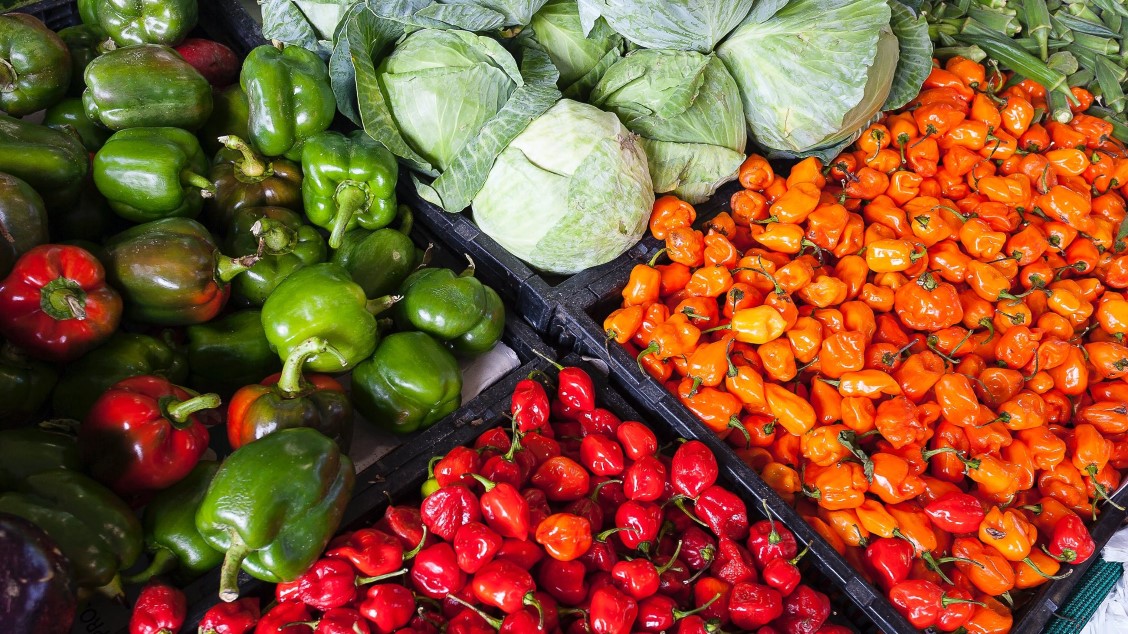
Microplastics in Food and Their Health Impacts
Common images of plastic pollution include rivers filled with plastic bottles, turtles tangled in debris, and beaches covered in litter. However, for International Day of Zero Waste, we’re highlighting how plastic pollution also comes in the form of particles smaller than grains of rice known as microplastics, which are far more widespread than regular plastic waste. Studies are increasingly finding microplastics in food and water.
International Day of Zero Waste highlights the importance of bolstering waste management globally and the need to promote sustainable consumption and production patterns.
Let’s explore what the implications of microplastics are, answering some key questions. These include what are microplastics, how and why have they ended up in our food, and what does this mean for our health?
Plastic pollution
The qualities that make plastic so useful—durability and resistance to degradation—are exactly what make it so slow to break down.
In less than 100 years, plastic production has increased to more than 430 million tonnes per year, with two-thirds of this being short-lived products that soon become waste. Plastic waste has been found at the deepest point in the ocean, the Mariana Trench, and at the highest point on land, Mount Everest.
Our article Plastic Pollution Needs Addressing explores this issue, outlining the full life cycle of plastics and how it generates pollution along the way. We also discuss the potential for adopting circular economy principles to help mitigate it.
But how do microplastics fit into this?
What are microplastics?
Microplastics are smaller than a grain of rice. They come in two forms, primary and secondary microplastics.
Primary microplastics are tiny plastics designed for commercial use. Typically, they are used in cosmetics and textiles. In the former, microbeads are small plastic beads used in personal care products. In textiles, tiny synthetic fibres are used, and can be broken down during laundry.
Secondary microplastics result from the breakdown of larger plastic items. The main contributors to these are single-use plastic products, which are items that are designed to be used once and then discarded, like water bottles, straws, and plastic bags.
Due to the tiny size of microplastics, there are estimates that we are unaware of 99% of the plastic that is entering the ocean. But how do microplastics travel?
How microplastics spread
As mentioned, primary microplastics in the form of microfibres can travel through water after laundry. Similarly, microbeads can travel through water from people using them whilst washing. Their small size means they can travel through filters at waste disposal centres.
Secondary microplastics spread via plastic degradation, or weathering. This is triggered by UV light, oxygen, water, and pollutants. As plastics breakdown because of these forces, they release toxic monomers and additives, the latter of which are added to plastics to emphasise certain qualities like colour and elasticity. As they break down into smaller sizes, they can more easily leach into the environment, such as in soil or water.
Furthermore, plastic debris can act as “carriers”, picking up organic and inorganic contaminants as well as pathogens. This effect is heightened by microplastics higher surface areas. This Trojan horse effect involves invasive species, diseases, and polluting substances entering environments, such as the ocean, on plastic waste.
Their small size and presence in soil and water also mean that they are often consumed by animals and plants. Moreover, MDPI researchers found evidence of microplastics in human urine samples. This suggests that humans are at risk for ingesting microplastics too.
Microplastics in food
A review in Foods explores human exposure to microplastics in food and from the environment.
The authors cite that microplastics are present in almost 700 aquatic species worldwide, and that a person can ingest from 1 to 30 microplastics per day by eating fish alone.
As mentioned, most microplastics enter the ocean from the degradation of stranded waste and wastewater discharges, but other sources include fish nets and lines and the atmospheric deposition of microplastics from the air.
Fish consume microplastics directly or by eating other fish or plants that have consumed them. After consuming microplastics, they accumulate in the digestive system and may move to other parts of the body. This is known as bioaccumulation: the absorption of a contaminant by contact, ingestion, or respiration.
Microplastics are also found in sea salt, especially if it’s sourced from areas with high microplastic pollution.
Microplastics in fruits and vegetables
The authors of the previous study cite that processed foods, particularly those in plastic packaging, are at risk of containing microplastics. But they can be found in fruits and vegetables too.
An article in Life investigated whether fruits and vegetables sourced from various markets in Turkey contain microplastics. They looked at pears, apples, tomatoes, onions, potatoes, and cucumbers from different sellers.
They found that even fresh fruit and vegetables can be contaminated with plastic. The larger pieces of plastic they found implied that the plastics came from the production phase, during agricultural activities, and during the transport and sale of them.
Smaller plastics enters these plant-based foods through the soil due to agricultural activities such as plastic mulches. Plastic mulch is added to soil to improve water and nutrient resource efficiency, provide thermal insulation, and to improve pesticide efficiency. However, plastic mulches are hard to extract at the end of the season.
Other sources include sewage sludge, atmospheric deposition, and degrading plastics. All of which cause bioaccumulation as plastics enter a plant’s roots.
Moreover, the authors cite various other studies that support their findings that “humans can be directly exposed to microplastics through fresh fruits and vegetables”.
Health effects of ingesting microplastics
There is a lot of uncertainty about the effects of microplastics on humans. A review in Sustainability overviews some of the potential effects.
In humans, microplastics can disturb various bodily systems, including the digestive, respiratory, endocrine, reproductive, and immune systems.
For example, in the digestive system, plastics can cause inflammation and alter the intestinal microbiome. This can lead to dysbiosis, with symptoms like abdominal pain, bloating, and changes in bowel habits. Also, absorbing environmental toxins, like heavy metals, carried by microplastics can lead to further gastrointestinal symptoms, like nausea and vomiting.
The study also mentions how, when inhaled, microplastics can irritate the airways and lungs, causing symptoms like coughing, sneezing, and shortness of breath. And chronic exposure can even cause lasting alterations in DNA, triggering inflammation, aging, and even malignant transformations.
Nevertheless, we do not know the extent of the health effects caused by ingesting microplastics, nor if there is a safe limit. And we don’t know how consuming microplastics in food specifically can interact with biological response and conditions.
The need for research on microplastics
Tackling waste in line with the recommendations of the International Day of Zero Waste means looking at less obvious forms. This includes plastics we may not be able to see.
Moreover, we don’t know enough about microplastics and their effect on humans, especially considering how prevalent they are in food, air, and the environment. We know that ingesting them are bad for us, but not to what extent.
Therefore, research is vitally needed to begin tackling this issue. MDPI makes all its research immediately available worldwide. This gives readers free and unlimited access to the full text of all published articles. This is vital for global issues like plastic pollution.
MDPI has over 400 journals dedicated to providing the latest findings. Also, many of our journals publish interdisciplinary research. If you’re interested in submitting your work, see our full list of journals here.










